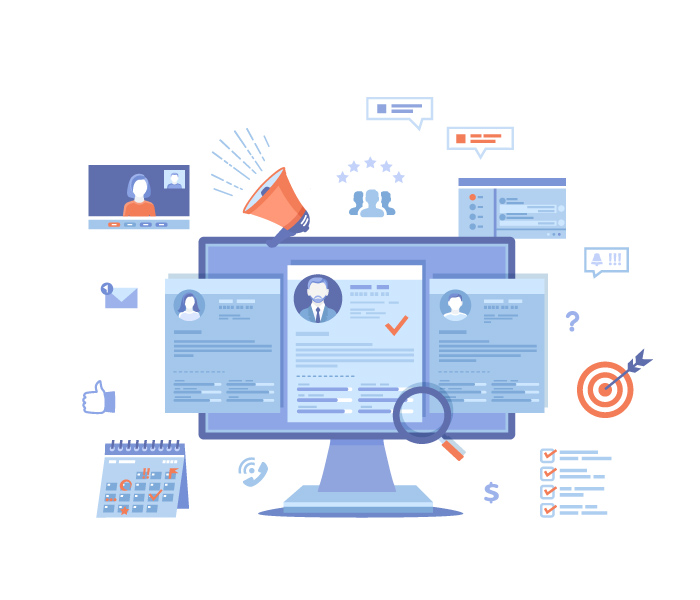With a vaccine rolling out and everyday life resuming on some level, the first half of 2021 has already proven to be a whirlwind. And, after the extreme uncertainty of 2020, most businesses were poised and ready to make the most of the new year, especially with online customer engagement.
For businesses that engage with customers online, this first half of the year has been critical, showcasing trends that are likely to be with us for a long time. It has also shed light on areas where customers are looking for improvement from businesses and created a roadmap for where the second half of the year is likely to take us.
Today, we’ll look at what the first half of 2021 taught us about online customer engagement, teasing out some key takeaways that will help shape your business’s online presence for the second half of 2021.
2021 Has Become a Year of Transition
McKinsey & Company said it well when it called 2021 the year of transition. Rather than a year of reacting to what was happening in real-time, as 2020 proved to be, 2021 is a year businesses can look to shape their own path.
Consumers are shifting away from lockdown lifestyles and are returning to some of their previous behaviors. In fact, many consumers are beginning to take part in what is called “revenge shopping” or “revenge travel.” These spending habits are the unfurling of pent-up purchasing power and the desire to participate in the world once again.
And, while consumers are undoubtedly beginning to return to activities they missed, such as attending an in-person concert or hopping on a plane to Maui, the year has thus far been a bit of a blend.
According to data from McKinsey & Company, younger demographics are more likely to jump back into life with pre-pandemic gusto, while their older counterparts are a little more cautious in their spending.
For businesses, this has meant taking a unique approach to customer engagement. Some customers are ready to return to the way things were, while others are more hesitant and prefer the interactions they learned during the throws of the shutdown. As the year continues, this transition is likely to stay central to customer engagement.
Digital Investments in 2020 are Paying Off in 2021 for customer engagement
If one thing has become clear during the first half of this year, it is that investments made in digital in 2020 are paying off. In fact, most retailers are leaning into their new online platforms, recognizing the immense amount of opportunity online sales can bring.
For those operating in the retail sector, an online platform has allowed businesses to reach untold amounts of new customers, even crossing global lines.
For those in service-related industries, digital has allowed for easier scheduling and transactions, moving toward a touchless experience.
And for every business type, digital transformation is now starting to settle into place as the new norm.
While many of the digital investments made in 2020 were simply a reactionary tactic, the first half of 2021 has demonstrated that these investments are worthwhile for many businesses and should continue. The events of 2020 hyper-accelerated the digital transformation, but 2021 is steadily reinforcing that this investment is actually a wise part of a bigger long-term plan.
The “Native Digital” Generation is Taking Center Stage
Millennials have often been referred to as the “native digital” generation. This generation has long relied on computers, cellphones, and electronic devices to navigate the world. And with the oldest millennials reaching 40 years of age, these digital-savvy buyers are taking center stage in 2021.
This has huge implications throughout the rest of 2021 and beyond. The collective spending power of this generation is $1.4 trillion in the U.S. alone, and according to American Express CEO Steve Squeri, millennials and their younger counterparts Gen Z are now spending 125% of their pre-pandemic levels.
These digitally savvy generations are leading the way in economic recovery. In fact, according to McKinsey & Company, more than 50% of U.S. consumers expect to spend extra by splurging or treating themselves throughout the year ahead, with higher-income millennials intending to spend the most.
This means that businesses can in no way take the foot off the pedal regarding digital and online offerings. Instead, the second half of 2021 is likely to include an increased amount of spending by this digitally focused generation, making online engagement more important than ever.

Targeted Messaging is Key for Customer Engagement
With more and more businesses turning to digital solutions throughout 2020, an increase in customer data followed suit. This has resulted in the ability to analyze this data and build increasingly targeted marketing and sales tactics.
And, there is money to be earned by doing so. According to the Boston Consulting Group, brands that personalize their messaging and approach when engaging with customers will win a disproportionate share of sales during the 2021 economic rebound.
People expect brands to know who they are and to market to them accordingly. In the early stages of digital marketing, it was difficult to connect all the pieces of customer data. Linking together a full campaign complete with a personalized customer journey was nearly impossible.
Today, however, the game is changing. Artificial intelligence (AI) and machine learning are making it possible to deliver more effective and highly targeted messaging to consumers. Not only that, but new technology is also paving the way to automate customer engagement.
In fact, according to Microsoft, by 2025, up to 95% of customer interactions will be through AI-powered channels.
As younger generations become the bulk of spending power, and as AI fuels automated interactions, businesses need to ensure that they have a robust system in place for online highly personalized customer engagement. Consumers will no longer be content with being volleyed among channels without their data and preferences following.
Looking at the Second Half of 2021
The first half of 2021 has painted a bright picture for business. Consumers are coming back to the market ready to increase spending and re-engage with the world.
For businesses, whether in product sales or services, this offers an immense amount of opportunity. As we enter the second half of 2021, there are four key areas for businesses to focus their efforts on.
1. Invest in Digital, But Do it Smartly
We learned from the first half of 2021 that digital is thriving. Many of the habits formed in 2020 during the pandemic have simply become customer expectations.
During the second half of 2021, businesses need to continue to invest in digital but should do so smartly.
For example, rather than throwing money at a paid ad campaign, hoping to see a return on investment, companies should focus their efforts on the areas where there is the most to be gained.
They can do this by carefully analyzing which digital strategies have been effective throughout 2020 and which have not. From here, companies should prioritize their digital experience, ensuring that customer engagement remains at an all-time high as 2021 spending increases.
Additionally, businesses should analyze their competition. What online customer experience is your competitor delivering, and how do you stack up against that? With more and more consumers turning to the internet to begin their customer journey, it is critical to understand where you should invest your dollars next to outpace other businesses in your vertical.
2. Evaluate Your Omnichannel Experience
With an increasing number of in-person activities returning in the second half of 2021, businesses need to assess their omnichannel experience. As people are exiting their homes, they will not be putting down their phones entirely but instead will be looking for a connected approach to sales and services.
What might start as an online interaction will likely evolve into an in-person experience. Businesses should walk through the customer journey, looking for areas where customers might face frustrations.
Seamless is key when it comes to omnichannel. If your customer engages with your team first through an online chat and later enters your brick-and-mortar location, no information should be lost. Everything should work together to create a frictionless experience.

3. Focus on Honing Your Personalized Messaging
As artificial intelligence and machine learning advance, consumer messaging is becoming increasingly personalized.
Think about it like this. When you land on Amazon’s home page, you don’t see a static home page that is the same as what your coworker or family member would see. Instead, you land on a dashboard that features the best picks for you, products you can reorder, and collections of products that are similar to items you have viewed before or are carried by the same brands.
With more and more businesses turning to a personalized experience, customers are beginning to see this as the norm.
If you are not implementing a personalized approach in your digital marketing yet, now is the time to hone this tactic.
Start by evaluating your paid ads. How personalized is the messaging? Are you targeting your customers based on demographics, shopping history, and search intent? If not, this strategy needs to be implemented in the second half of 2021.
4. Pick a Trusted Partner
Finally, as we enter the second half of 2021, the important role digital will play in the world of commerce, services, and sales are becoming crystal clear. Not only that, but the world of digital marketing and online storefronts is also simultaneously becoming increasingly complex.
Rather than attempting to navigate this digital-first experience alone, pick a trusted partner to help you in the rest of the year ahead.
At J&L Marketing, we are passionate about ensuring that businesses can remain competitive in the ever-changing digital landscape. We dedicate our work to staying abreast of the latest trends and technology.
The result is that our clients can take the lead in their markets, outpacing competition through intelligent digital tactics. Whether you are operating a small service-based business or a large retail operation, we can assist you in putting together the right strategy to best engage with your customers online.
If you are interested in learning more, we invite you to check out a few of our recent case studies showcasing our work on increasing customer engagement or simply reach out to our team. We will be more than happy to provide you with a consultation, assessing the current strengths and weaknesses of your business’ online strategy.



